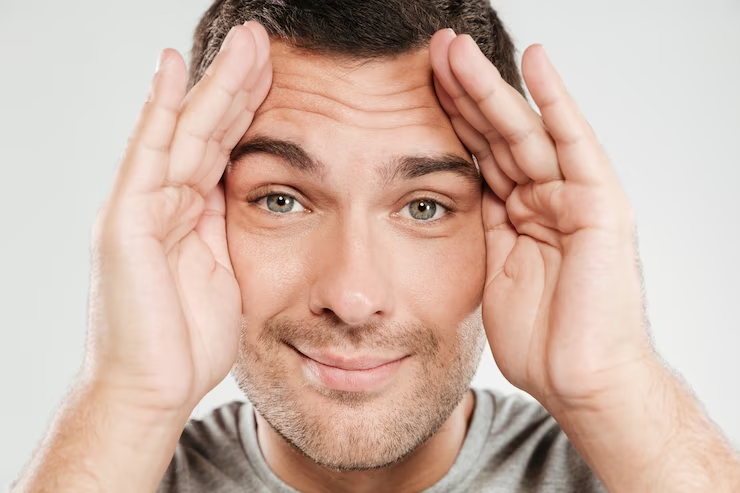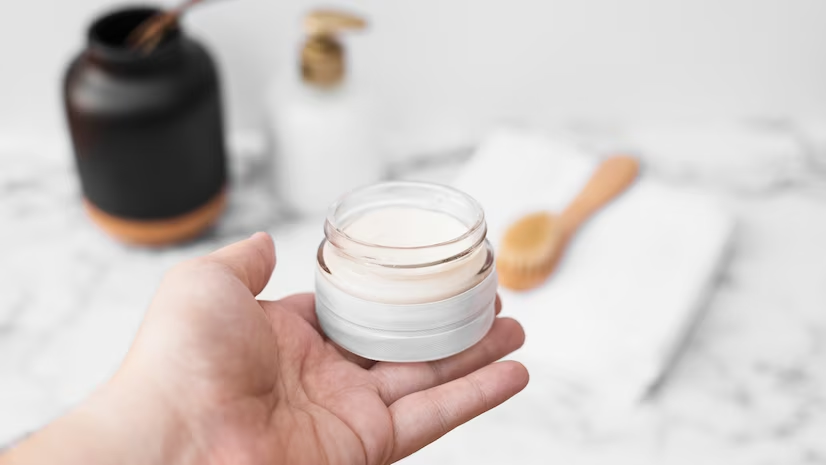
Many of us are guilty of making some serious skin care mistakes—like going to bed without washing our faces or spending too much time in the sun without sunscreen. But did you know there's a way to tell if your skin is aging? It's called fine wrinkle and fine lines, which are not necessarily the same!
In this blog post, In this article, we'll discuss how to tell the difference between wrinkles and fine lines so you can make an informed decision about which product is suitable for your skin!
What Are Fine Lines
Fine lines are temporary changes in the texture or appearance of your skin caused by dehydration, sun damage, and other conditions. They often appear around the eyes and mouth area because they are more sensitive than others to changes in pH levels due to aging or environmental factors.
What are Wrinkles
Wrinkles are permanent creases or folds in the skin caused by aging, sun exposure, and stress. It forms when the skin loses its elasticity. A study conducted in Nepal with Caucasian or Mongolian tribes showed approximately 80% of adults develop wrinkles due to sun exposure and increasing age.
They are prevalent in areas of the body that are exposed to sunlight, such as the face and neck. The appearance can be reduced by using moisturizers and serums on your face.
Causes of Wrinkles and Fine Lines

Sun damage
In particular, UV rays from the sun can cause skin damage, leading to fine lines and wrinkles. UVA rays are particularly damaging because they penetrate deeper into your skin than the surface. UVB rays are the more familiar ones you see on the beach—they cause sunburns and suppress your immune system.
Facial expressions
Repeated facial expressions, like frowning or squinting, can cause fine lines to form. While having some lines on your face is normal due to natural aging, repeated facial expressions may accelerate the process and make them more visible.
Dehydration
As you age, your skin loses its elasticity, giving it its plumpness and bounce. The loss of that bounce can make fine lines and wrinkles more visible. To combat dehydration, try drinking eight glasses of water daily and use a moisturizer with hyaluronic acid.
Aging
The first cause of wrinkles is the natural breakdown of collagen and elastin in the skin. These proteins provide your skin with strength and elasticity, but, as you age, they break down faster than your body can replace them. This causes the skin to lose its ability to bounce back after being stretched or pulled—and that's when you start getting wrinkles.
Lifestyle
Smoking also contributes to the formation of wrinkles because it speeds up the breakdown of collagen and elastin in your body by increasing oxidative stress on your cells.
Genetics
Some people are predisposed to wrinkles because their parents also had them at an early age or because they have a specific genetic mutation that makes them more likely to develop them.
Prevention and Treatment of Wrinkles and Fine Lines

Prevention
The best way to prevent the formation of wrinkles and fine lines is to protect your skin from the sun's UV rays. Sunscreen lotion with SPF 30 or higher should be applied every day before going outside, and it should be reapplied at least every two to three hours if you are outside for more than longer hours. Application of a moisturizer on a daily basis protects your skin from the formation of wrinkles or fine lines because it helps keep your skin hydrated and plump.
Treatment
If you already have wrinkles and fine lines, there are several treatments available that can help diminish their appearance. Some of these treatments include laser resurfacing procedures, which use laser light to vaporize damaged tissue and stimulate collagen production; chemical peels, microdermabrasion, and botulinum toxin injections; and microcurrent therapy, which involves applying tiny electrical currents to the skin to stimulate collagen production without damaging any surrounding tissue.
Wrinkles and Fine Lines: Can they be Prevented?
Wrinkles and fine lines are normal for aging, but it doesn't have to be that way. While you can't prevent them altogether, there are many things you can do to slow down the formation of new wrinkles and fine lines.
Lifestyle Changes
Lifestyle changes like quitting smoking and getting more sleep can make all the difference in how quickly your skin ages. It would be best to consider limiting your exposure to UV rays, which can cause premature wrinkles and other damage to your skin.
Skincare Regimens
A good skincare regimen can help prevent the formation of wrinkles and fine lines by keeping your skin hydrated and healthy. The right moisturizer can help keep your skin moist and plump, making fine lines less noticeable.
If you're looking for an anti-aging solution, look for a product that contains retinol, vitamin C, or alpha hydroxy acid. These ingredients have been proven to help strengthen collagen in the skin and decrease the appearance of wrinkles when used consistently over time.
Cosmetic Procedures
Cosmetic procedures are a fast, effective way to combat wrinkles and fine lines. It can help you look younger and more vibrant without resorting to invasive procedures or surgeries.
Botox is a popular treatment that uses a purified form of botulinum toxin to tighten the muscles around your eyes, which can help prevent wrinkles in that area.
Another popular procedure is laser resurfacing, which uses lasers to remove dead skin cells and stimulate collagen production, resulting in smoother skin. Injectable fillers are also often used on people who suffer from deep wrinkles caused by loss of fat tissue underneath their skin (known as sunken cheeks).
Importance of Sun Protection
The sun's UV rays damage your skin by breaking down collagen and elastin fibers, leading to the formation of wrinkles and sagging of skin. This process is fast when you are young (because your skin regenerates more quickly) and slows down as you age.
Avoid the sun during peak hours (10 AM-4 PM) when it's most intense, and wear sunscreen with SPF 30+ daily. It's essential for preventing wrinkles and fine lines and protecting your skin from cancer.
Wrinkles and Fine Lines: When to Seek Professional Help?
Signs of Aging to Watch Out For
Wrinkles and fine lines are some of the most noticeable signs of aging, but they're not necessarily the only ones. If you see any of the following signs, it's time to seek professional help:
You have deep furrows between your eyebrows or other crevices in your face.
You have many wrinkles around your eyes, mouth, and forehead.
Your lips look thin or droopy when they're relaxed (they should be full and prominent).
Your skin has lost its elasticity and bounce-back ability—it doesn't return to its original position after being stretched out.
Consulting with a Dermatologist
If you're concerned about your skin and notice some changes in its appearance, it's important to talk with a dermatologist about the available treatment options.
Your doctor will be able to assess your skin condition and determine if you're a good candidate for any treatments or procedures that may help prevent further damage or improve the appearance of your skin. They can also advise you on what products or home remedies might best treat your concerns.
Choosing the Right Treatment Option
Once you've determined the cause of your wrinkles and fine lines, you can choose one of the treatment options: medication, lasers, injectables, or invasive surgery.
Here are some factors to consider when choosing a treatment:
Cost effectiveness:
The cost of treatment can vary wildly depending on where you go for the procedure. Some doctors offer discounts for multiple procedures at once, so be sure to ask about any deals they offer.Time duration:
Some treatments take longer than others, but the length of time doesn't necessarily mean that one is better than another—it depends on what you're looking for in a treatment.Side effects and risks:
Some treatments carry more risks than others do. For example, injectable fillers have been known to cause allergic reactions or infections; however, these risks are rare when performed by a qualified professional who follows proper safety protocols during treatment sessions.Conclusion
If you're worried about the wrinkles and fine lines on your face, it's okay to feel self-conscious about them. But, if you have concerns that they are interfering with your day-to-day life or if they're starting to make you feel like an older person than you are, it may be the right time to seek professional help.
There are a wide variety of treatments available that can help reduce the appearance of fine lines and wrinkles without any downtime. Finding the right treatment for your skin may take some time and effort, but it will be worth it if you seek help from an experienced dermatologist!


